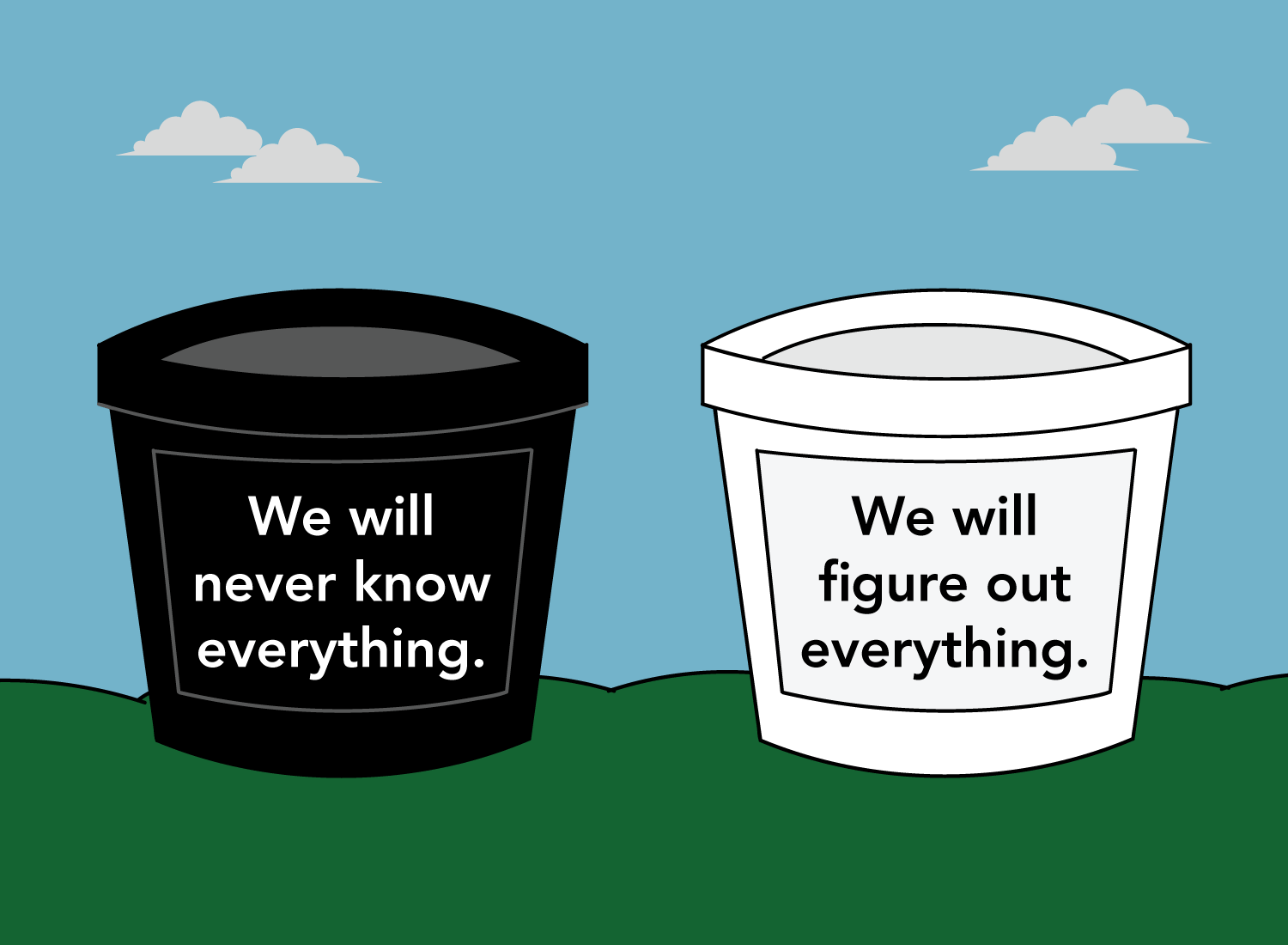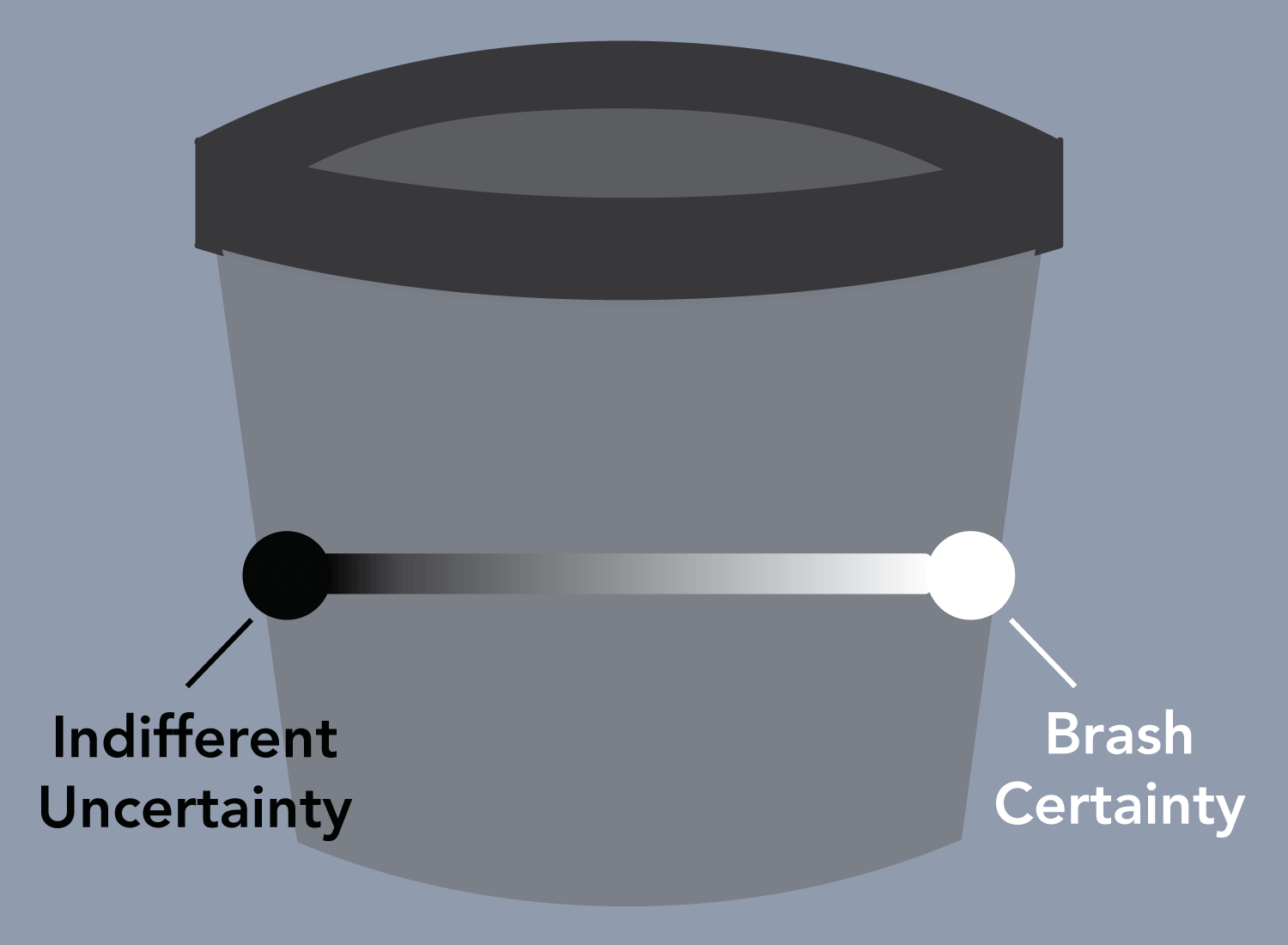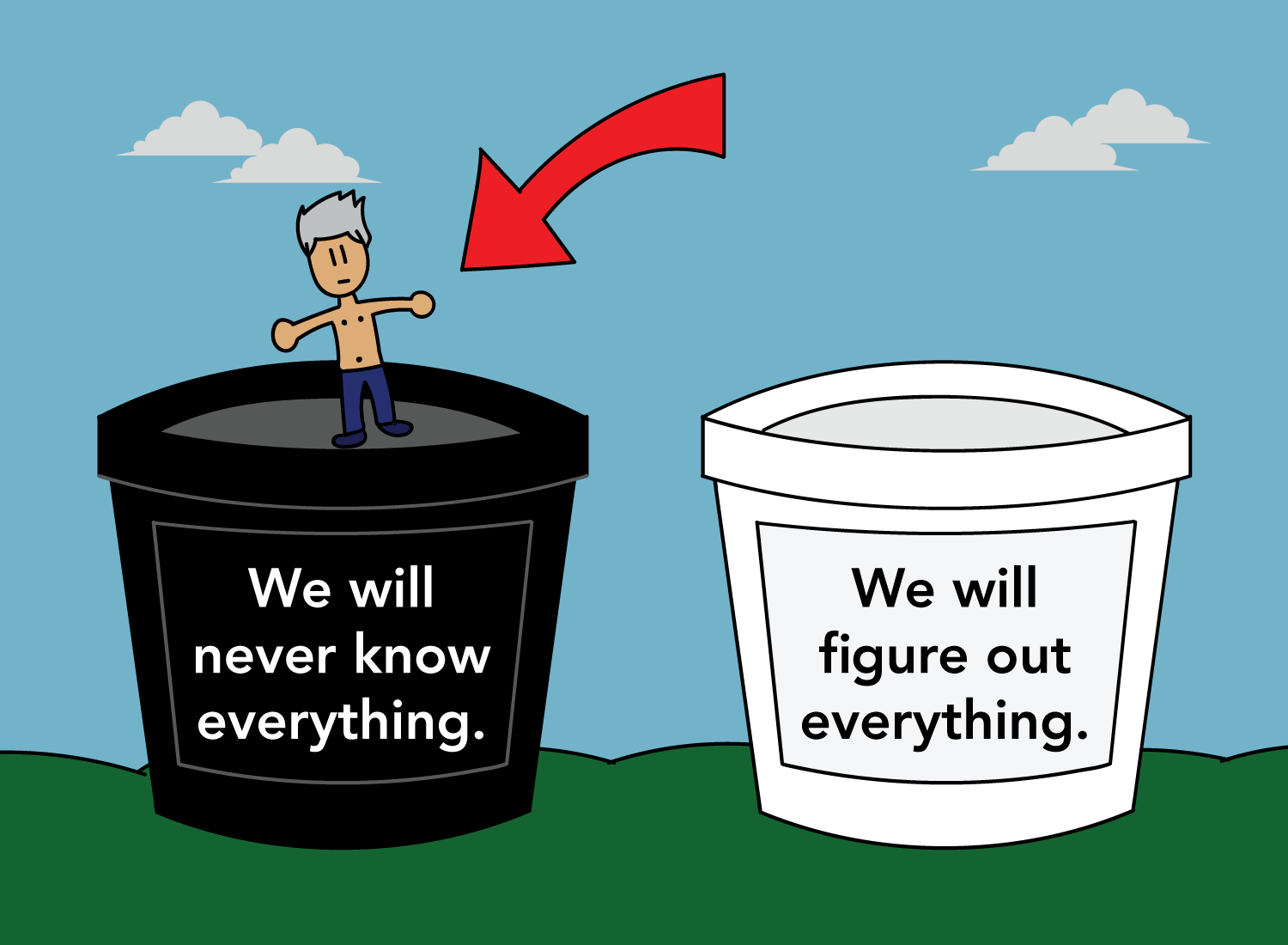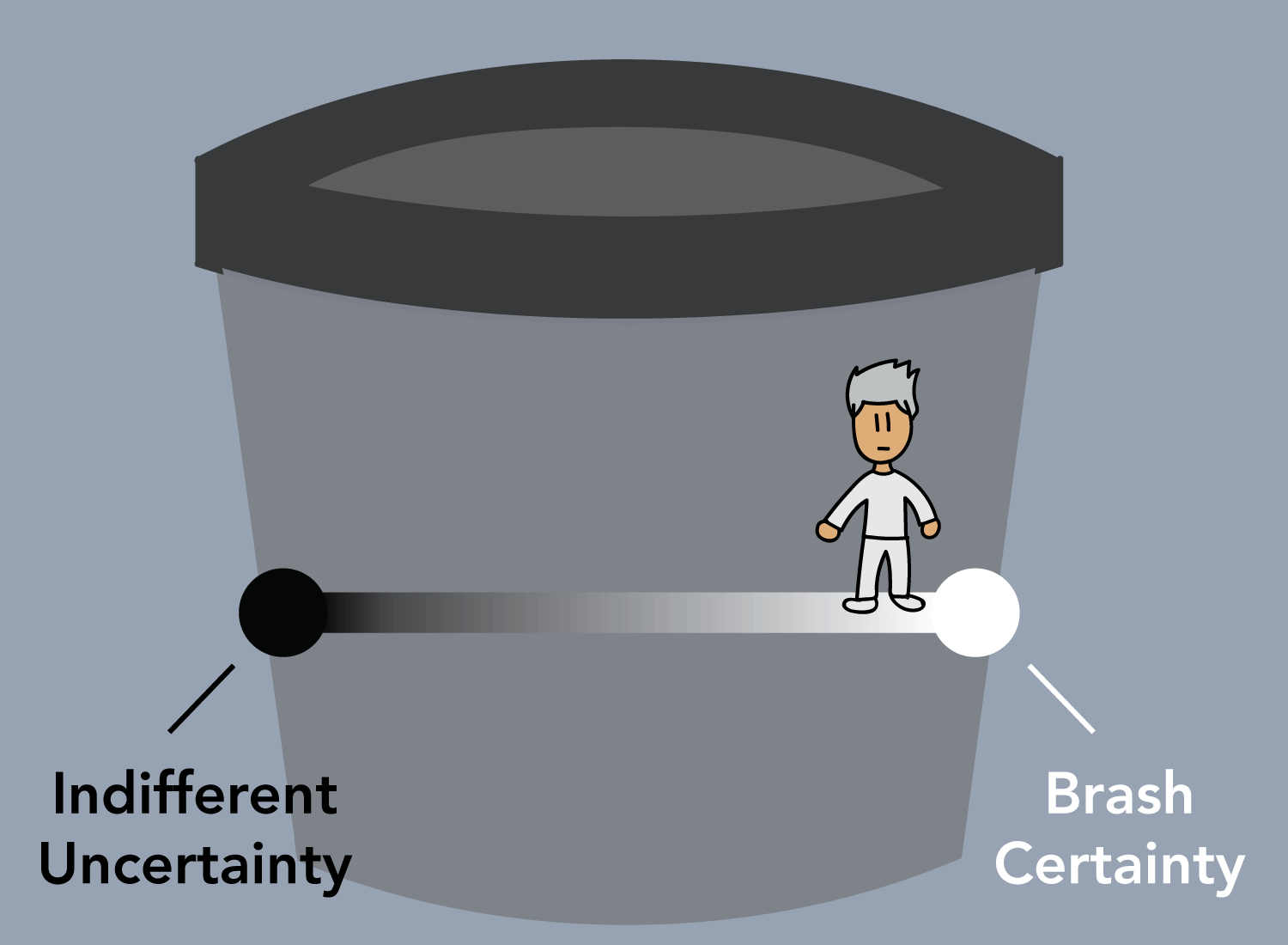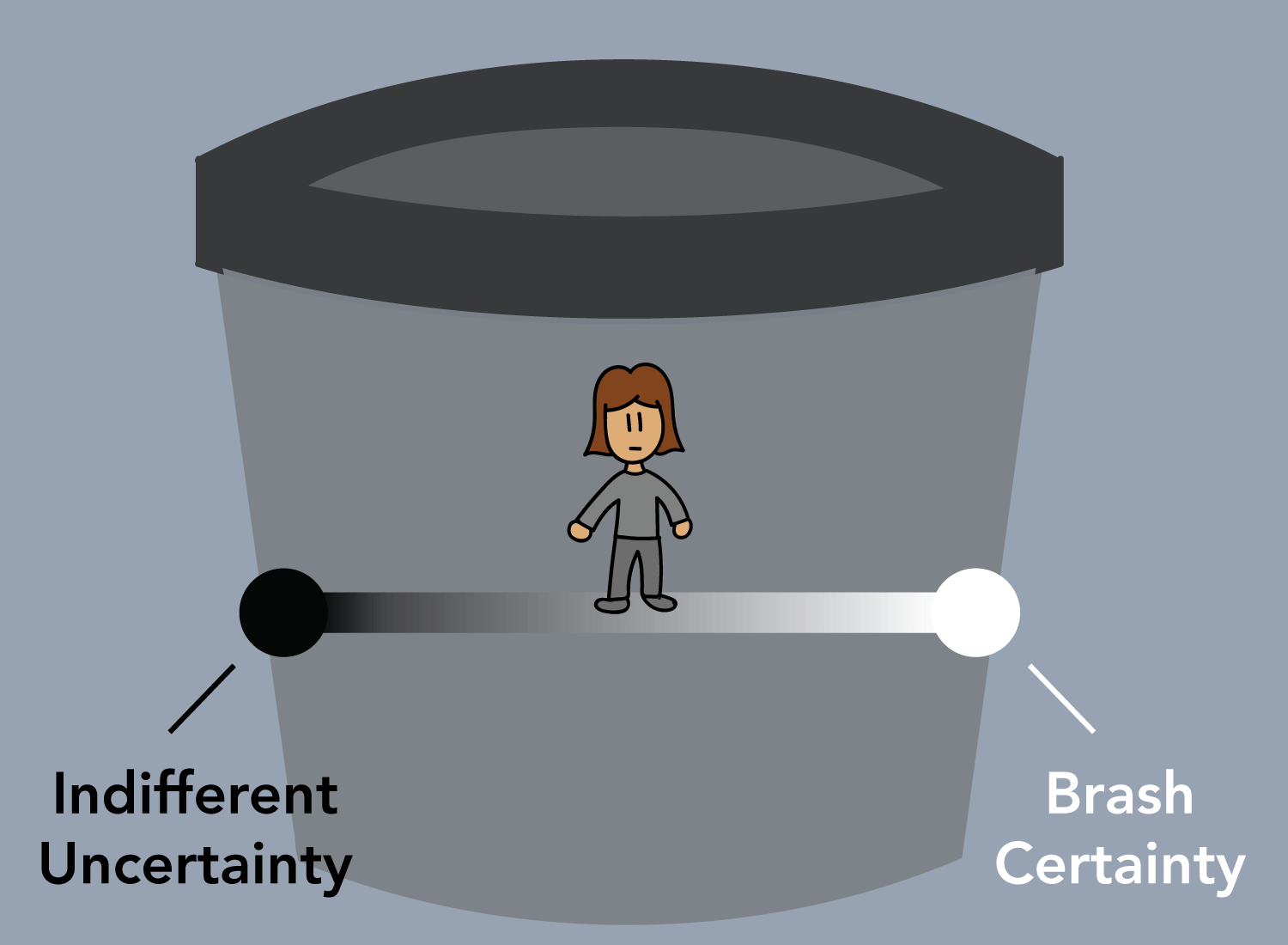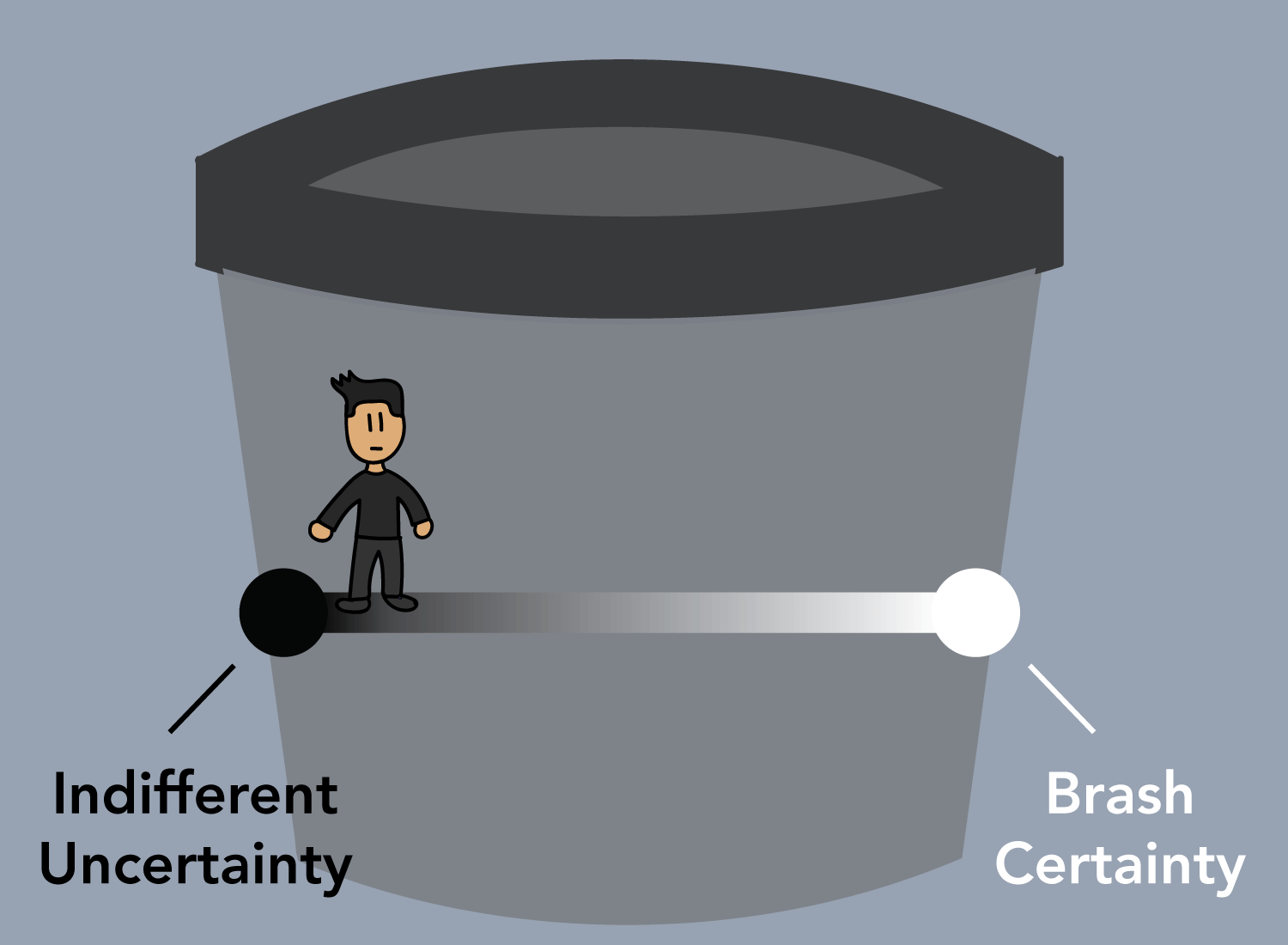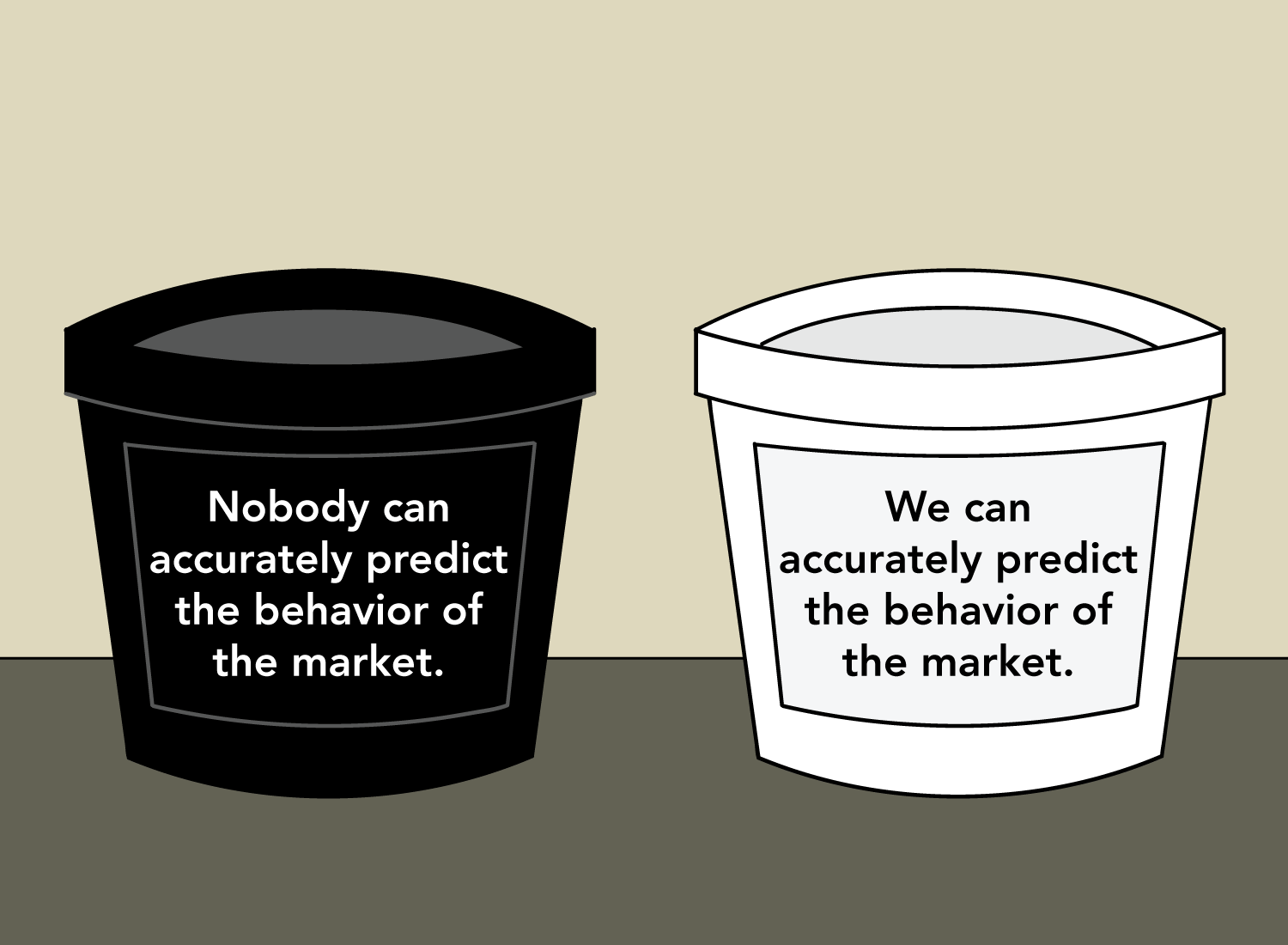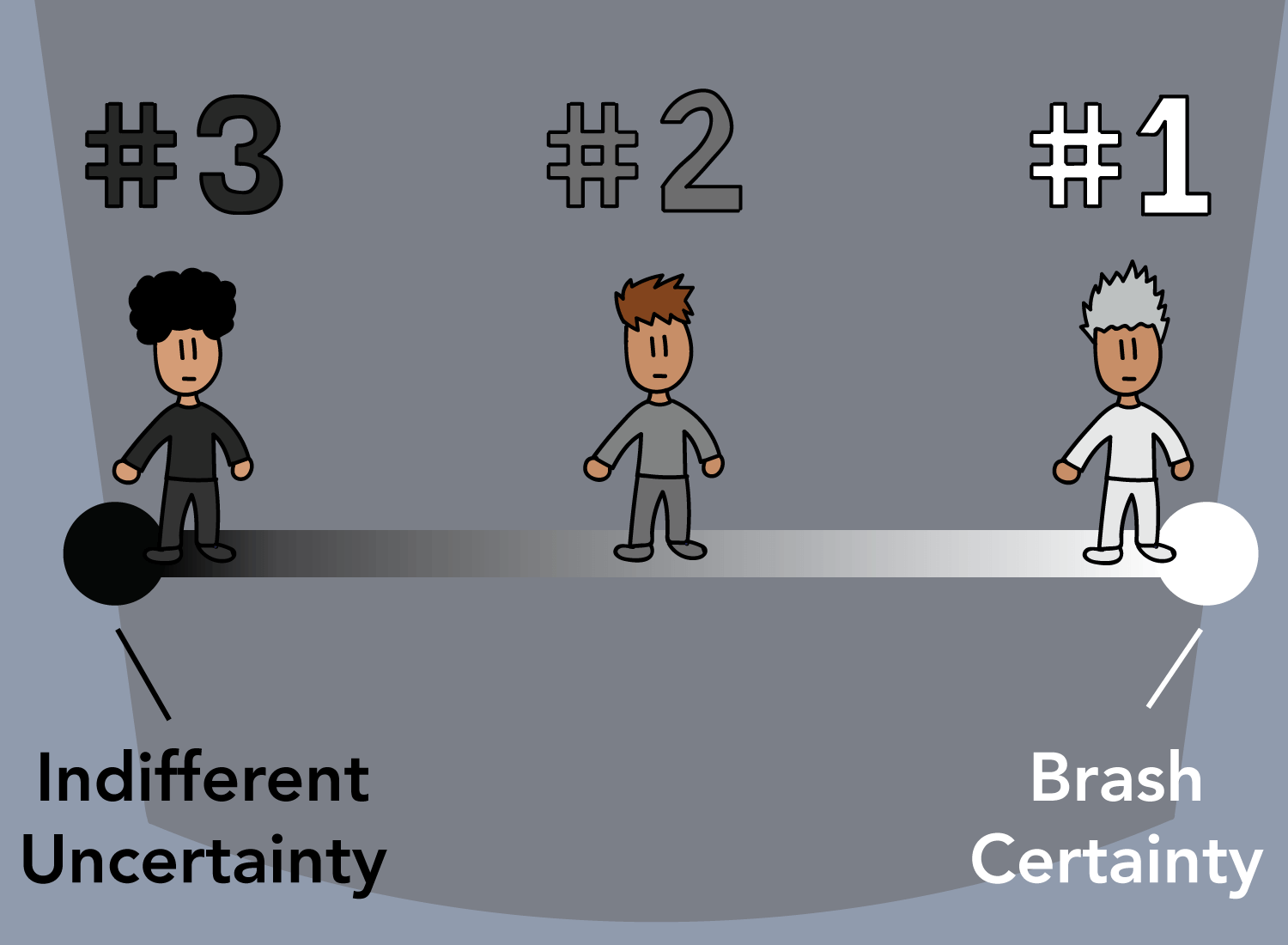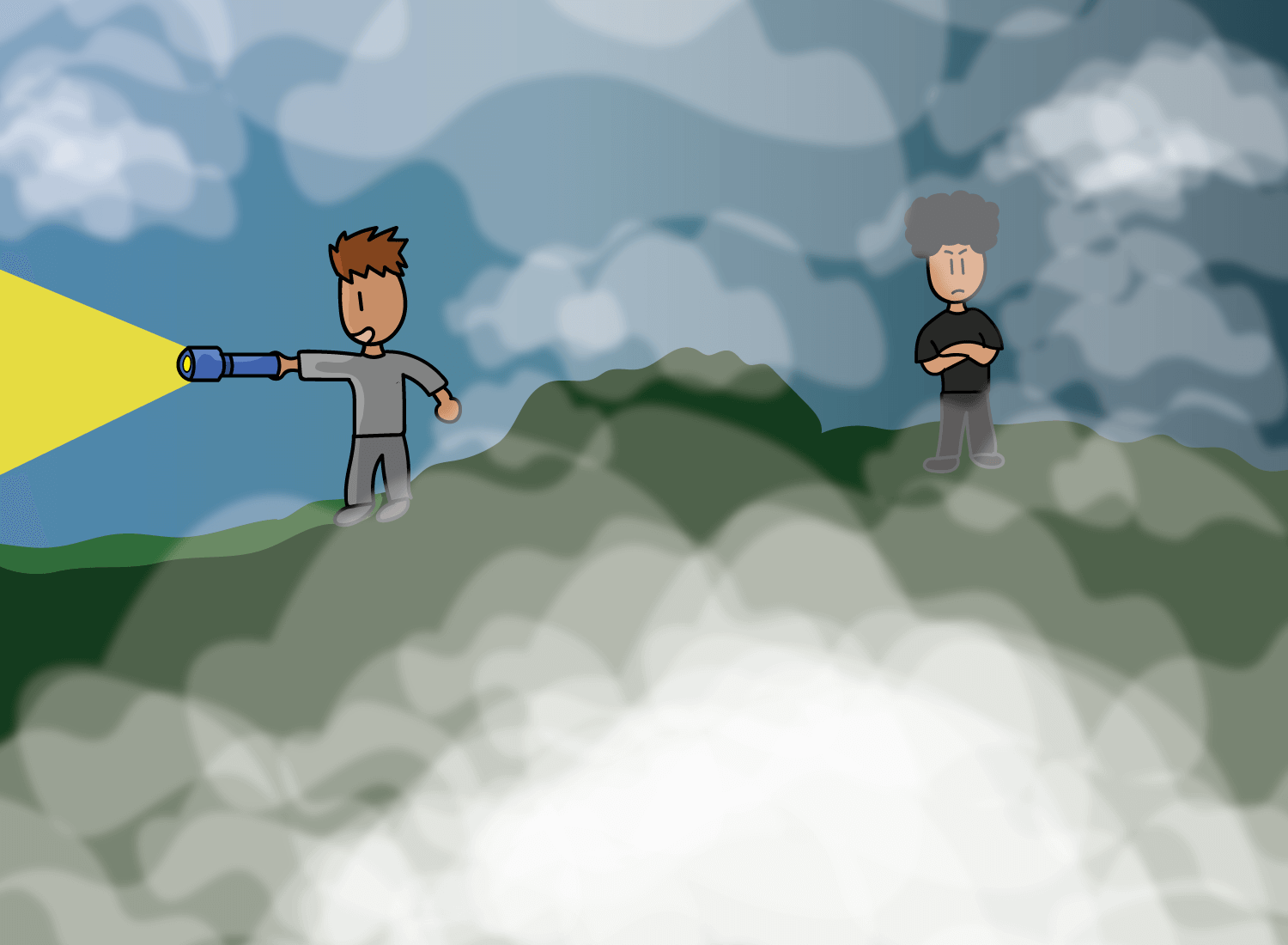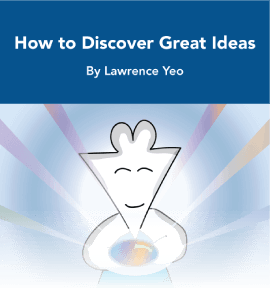The Infinite Shades of Uncertainty
“Everyone makes mistakes.”
There are few statements as universally accepted as this one, largely because no one would doubt its truth. If there is one thing that science and religion can agree upon, it’s humanity’s fallible nature, and how the recognition of this is the first step toward uncovering reality.
But consider this clause that’s been added to the sentence:
“Everyone makes mistakes, so no one person is better than the other.”
This statement would now raise eyebrows, and while some might agree with it, many would (rightfully) disagree. Sure, both Abraham Lincoln and Joseph Stalin made some mistakes in life, but clearly, not all mistakes are created equal.
While this sounds intuitive on its surface, there are a surprising number of instances where we fail to see this type of delineation.
For example, consider a choice between the black or white bucket below:
For almost all of us, we would go with the black one. The condition of uncertainty is one that governs our entire existence, so this is largely an uncontroversial choice to make.
However, consider what happens once we accept that “we will never know everything.”
Naturally, second clauses begin forming, and here are three concrete examples of them in action:
#1: “We will never know everything, for only God does.”
#2: “We will never know everything, but we can attempt to figure some of it out.”
#3: “We will never know everything, so there’s no point in even trying.”
While each of these statements come from the black bucket of uncertainty, you’ll notice that Person #1 makes a subsequent conclusion of certainty, #2 accepts the situation but tries to explore it, and #3 takes a nihilistic view of indifference and apathy.
All three accept uncertainty as their baseline, but you’ll notice that not all uncertainties are created equal.
What this reveals is that within the black bucket, there is yet another choice to make between black and white, but this time, it’s along a spectrum of gray that connects two additional endpoints of indifference and brashness:
Even though a statement like “we will never know everything” is a vote for uncertainty, what you decide to do with that declaration colors that vote in a different way.
For example, let’s bring in Person #1, who states that “we will never know everything, for only God does.” His initial acceptance of uncertainty places him in the black bucket…
But his definitive statement that only God knows everything actually places him much closer to the “brash certainty” side of things. So while he does live in the black bucket, the outfit he’s wearing is much closer to the white hue of certainty that he pretended to denounce:
Now let’s look at Person #2, who believes that we should try to figure things out in the midst of uncertainty. Although she accepts that she will never learn everything, she still wants to discover some semblance of certainty regardless. She is committed to the pursuit of truth, while being humble enough to know that she will uncover only a tiny sliver of it in her lifetime.
Her outfit has a blend of both worlds, so it has a solid gray hue to it that takes the best of both ends:
And finally, Person #3 takes the reality of uncertainty and lets it overwhelm him with inaction. His nihilistic view puts him in a position where he will contribute nothing to the advancement of human knowledge, and that lack of curiosity will likely have unfavorable consequences that extend to other parts of life.
His outfit has a darker gray hue to it, which blends his acceptance of uncertainty with the apathy he has chosen to absorb:
Just because you’ve chosen one bucket over the other doesn’t make that selection a definitive one. It is ultimately how you position yourself within the bucket that matters most. In a choice between black or white, the outfit you wear will likely be gray, but remember that not all grays are created equal.
Eliezer Yudkowsky elaborates on this point:
Everything is shades of gray, but there are shades of gray so light as to be very nearly white, and shades of gray so dark as to be very nearly black. Or even if not, we can still compare shades, and say “it is darker” or “it is lighter.”
In the same way that not all character imperfections are equal, remember that all uncertainties have different textures. In our illustrated example, Person #2 knows that uncertainty will never be eliminated, but she is making an honest attempt to reduce it whenever she can. Person #1, on the other hand, thinks it can be entirely eliminated by an Eternal Being, and Person #3 is hellbent on making no effort to decrease it at all.
While it’s easy for us to declare that we embrace uncertainty, the important thing is what we choose to do with it. Are you doing your best to reduce it, while knowing that it will never be entirely be gone? This determines what shade of gray you really are, as nothing is as black, white, or uniformly gray as we want things to be.
Seeing Through a Shaded Lens
The failure to see the gradients of gray are everywhere, but one area where it comes up quite often is finance. Consider these two buckets:
Almost everyone will choose the black bucket, but the way they operate within it and use it to justify their decisions make all the difference. Similar to the prior example, consider the following three viewpoints:
#1: Nobody can predict the behavior of the market, for it is governed solely by randomness.
#2: Nobody can predict the behavior of the market, but I will use whatever information I have to understand it better.
#3: Nobody can predict the behavior of the market, so there’s no point in even paying attention to it.
All three have accepted the black bucket of uncertainty as the initial condition, but in reality, their outfits are various shades of gray:
While Person #2 makes a humble effort to figure out where the market may go (despite knowing it can’t be accurately predicted), Persons #1 and #3 will staunchly assert their position and claim that nothing can be done about it.
This is why when market crashes happen, it’s easy for Persons #1 and #3 to get on their high horse and proclaim, “See, I told you so! Haha, nobody can predict the market!” and then proceed to feel good about themselves because they wore the badge of uncertainty. They will then laugh at Person #2 for having the intellectual curiosity to attempt in figuring things out, no matter how honest or humble that individual may be.
This type of lazy thinking is caused when we give too much credence to the black bucket, and forget the shades of gray within it. While we cannot eliminate uncertainty entirely, we can still do our best to reduce it as much as possible. There’s a big difference between embracing uncertainty as an invitation to explore things further, and viewing it as an excuse to halt curiosity altogether.
Whenever you find yourself aligning with a certain bucket, remember that there’s a gray spectrum embedded within that choice as well. And what shade of gray you wear is determined by how willing you are to reduce the uncertainty that lives there.
Some of you may sympathize with the statement that “all politicians are liars.” Perhaps, but isn’t there a difference between someone who lies compulsively, and one that does so with reservation? Asserting that “all politicians lie” shouldn’t excuse the behavior of those who are particularly egregious, nor should we accept them as inevitabilities. Even if we do think all politicians do lie, we should still try our best to elect people that seem to do it far less.
Similarly, asserting that “we don’t know shit” is something we can all accept, but there’s a difference between someone who is failing to prove why the Earth is flat, and someone who is failing to prove string theory. Both will throw their hands up in the spirit of uncertainty, but the former lacks the humility required to let go of a key belief that doesn’t portray reality. While it’s true that uncertainty governs these two minds, the flat-Earther is secretly holding onto a brash certainty that the physicist is not.
In a world where nothing is certain, we cannot hope to be more correct – we can only be less wrong. The default setting we face is one where nothing is truly comprehensible, and great effort must be invested to access a mere atom of clarity.
If you understand that nothing is ever black or white, then that’s a great start. But the real shift happens when you can view the world through the infinite shades of gray.
_______________
_______________
Related Posts
The path to wisdom requires us to wrestle with the unknown:
From Ignorance to Wisdom: A Framework for Knowledge
But for the little we do know, let’s make the most of it:
The Release Ratio: How to Make Use of Everything You Know
And a necessary primer on the greatest unknown of all:
